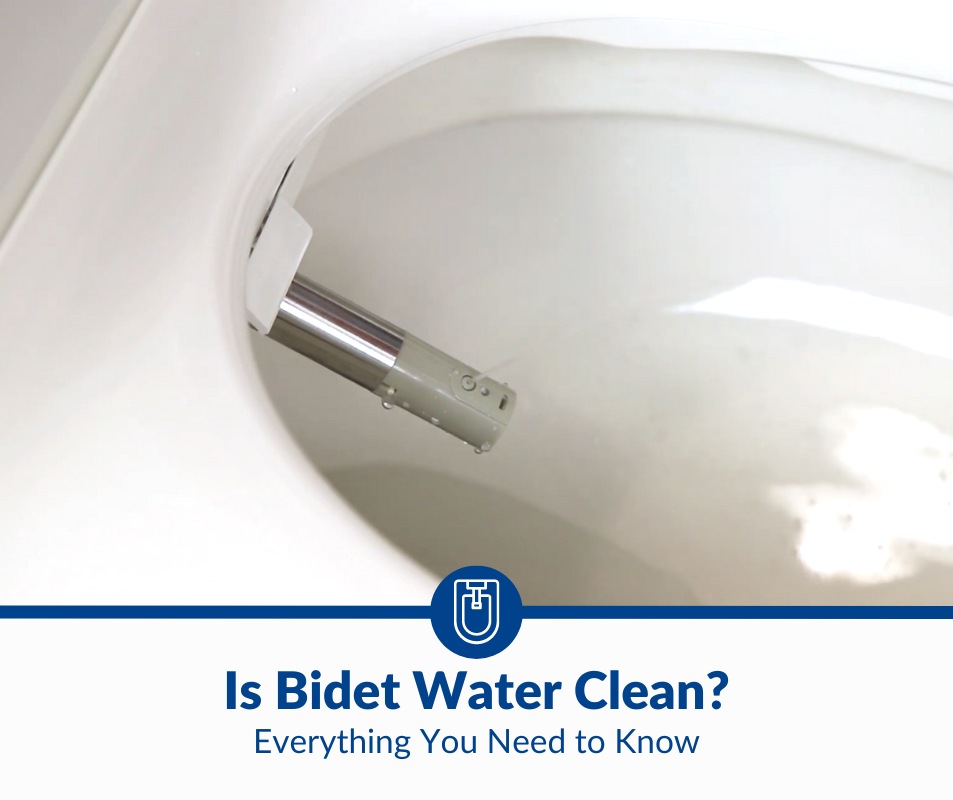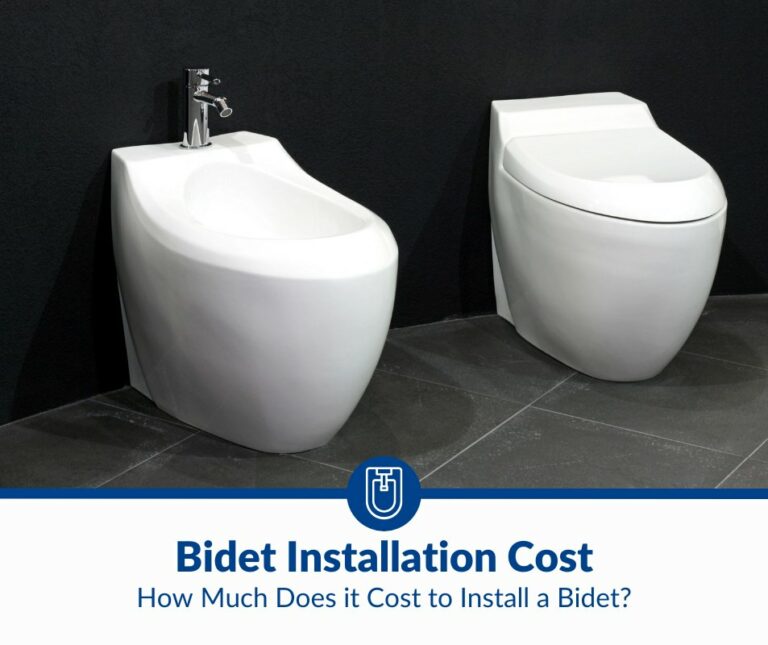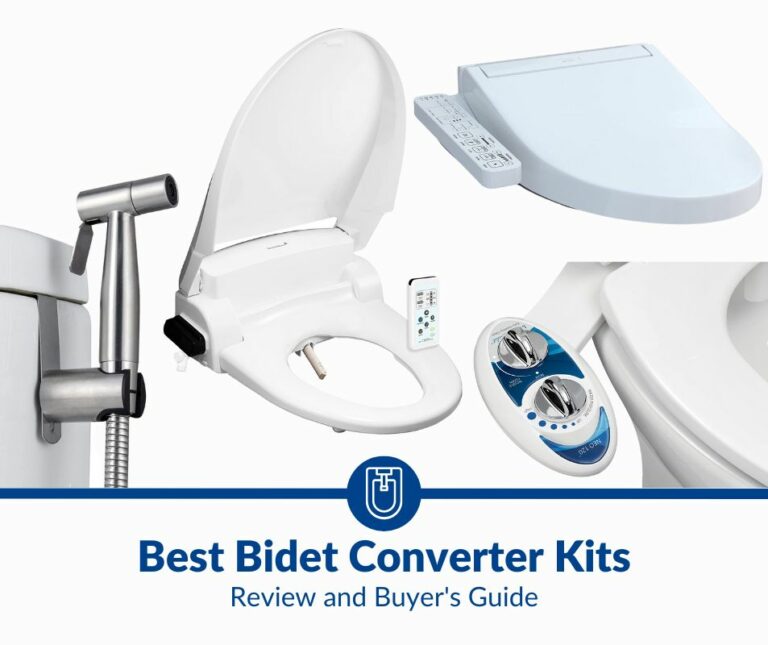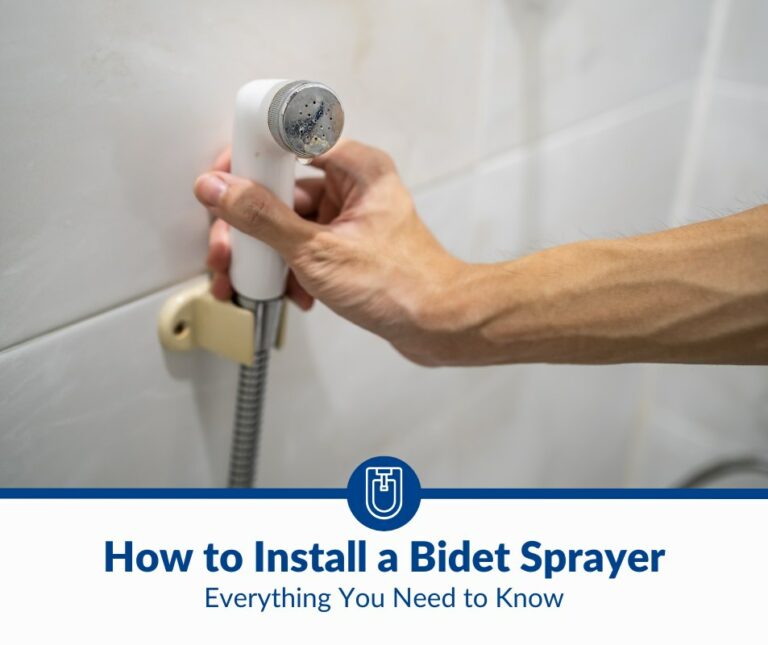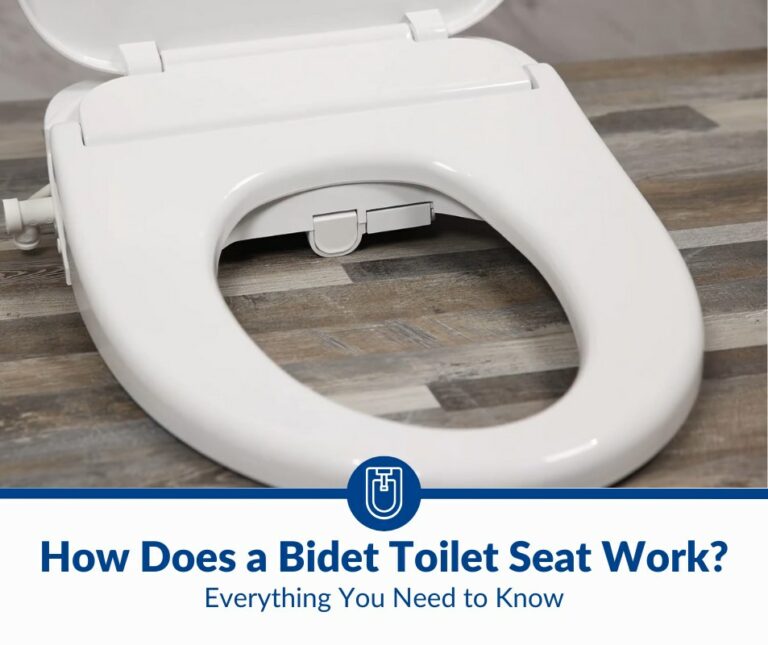Is Bidet Water Clean? Here’s What You Need to Know
A bidet is a bathroom fixture intended for washing your private areas after using the toilet. They’re typically installed in the toilet seat, but some models feature a handheld spray nozzle that functions much like a shower head. Before getting one, you may be wondering, is bidet water clean?
Bidet water is clean. It’s often considered dirty because it comes into contact with the body. However, bidets use clean water from the household’s supply and spray it through a nozzle. The water pressure from the nozzle cleans off any debris or waste on the body.
If you don’t use a bidet, you’re missing out on its many benefits, including improved hygiene, less irritation, and fewer UTIs. The rest of this article will explore how bidets work, why you should use them, and how you can keep them clean and functional.
Where Does Bidet Water Come From?
Bidet water comes from the same supply as the rest of your home. Usually, the water will come from a community water system or a private well. The water is then treated to remove impurities and bacteria before it is used in a bidet.
For most households in the United States, water comes from surface and groundwater sources, like rivers and lakes. This water is then treated at a water treatment plant before being sent to homes and businesses. According to the United States Environmental Protection Agency (EPA), Americans use approximately 82 gallons (310 liters) of water daily for cooking, cleaning, and drinking, and all this water usually comes from the same source.
However, some people get their water from other sources, like private wells. Groundwater is water that has seeped into the ground and been stored in the pores of rocks and soil. This type of water usually needs less treatment than surface water before people can use it in their kitchens and bathrooms.
If you’re considering adding a bidet to your bathroom, there’s no need to worry about where the water comes from. The water for your bidet will come from the same supply as your home. So, if you’re already comfortable with using your home’s water for drinking and bathing, then you shouldn’t have any problems using it for a bidet as well.
How Much Water Does a Bidet Use?
A typical bidet only consumes a little water, making it a very eco-friendly option for the bathroom. The exact amount it consumes depends on how long you keep the water running. On average, a bidet uses about 0.125 gallons (473 milliliters) of water per use. The water pressure is also adjustable on most models, so you can use as little or as much water as you need. It’s good news for those who are concerned about their water usage.
Bidets offer a convenient way to stay clean and fresh, and they can save you money on toilet paper over time. Additionally, you’ll never have to worry about running out of toilet paper again.
If you’re looking for a convenient way to stay clean and fresh, and save money on toilet paper, then using a bidet is definitely something to consider.
Can Bidets Have Warm Water?
Bidet water is usually supplied by the same cold-water supply as the toilet or sink. An electric element heats the water as it passes through to the bidet sprayer. Most new bidets even have an adjustable water temperature feature.
Bidets with warm water can benefit people with medical conditions such as hemorrhoids, anal fissures, or prostatitis. The warmth can help relax muscles and improve blood flow. Additionally, people who frequently use bidets may find warm water more comfortable than cold water.
How Do Bidets Work?
Bidets were designed to provide a more eco-friendly alternative to toilet paper. They’re also easier to use for people with mobility issues. Modern bidets work by delivering a stream of water to the user’s bottom, providing a thorough cleanse.
There are two types of bidets:
- Standalone bidets
- Built-in bidets
Built-in bidets are often incorporated into toilets. Standalone bidets look like small stools or chairs and typically have a spray nozzle from under the seat.
Bidet water supply systems can either be plumbed into your home’s existing water lines or use an attached tank that needs to be filled manually. Most standalone bidets will have an attached tank because they need to be portable. When you flush a toilet, water is taken from the bowl and sent to the tank to be refilled.
Here’s how to use a bidet:
- Place yourself on the toilet seat and press the button that delivers the water.
- Adjust the water pressure and temperature to your preference.
- Move around to make sure the water cleanses your desired areas.
- If your bidet features a handheld nozzle, take the handpiece and place it near your target areas.
- When you are finished using the bidet, press the button again to stop the water flow.
- You may then dry off with a towel or toilet paper.
Who Can Benefit From Using a Bidet?
There are many benefits to using a bidet, including improved hygiene, less irritation, and fewer UTIs. If you’re someone who struggles with maintaining good hygiene or suffers from chronic infections, a bidet may be just what you need.
Those Who Want To Be Eco-Friendly
Bidets are perfect for those who want to be eco-friendly or are looking for cost-efficient options. Using one can significantly reduce the amount of toilet paper an individual uses. These bathroom fixtures offer a more thorough cleanse than wiping toilet paper alone.
When you use a bidet, you’re able to actually clean your anus rather than wipe it with toilet paper. You may only need to use toilet paper to dry yourself afterward.
Additionally, bidets are a more sustainable and environmentally friendly option than toilet paper. The production of toilet paper requires the felling of trees. In contrast, bidets don’t require the felling of trees.
In addition to being more environmentally friendly, many people who switch to bidets find that they no longer need to use as much soap and water to clean themselves. This is because the bidet does a much better job of cleansing the area using a gentle stream of water. As a result, people who use bidets often report feeling cleaner and more refreshed after using the restroom.
Those Who Are Prone to UTIs
A urinary tract infection (UTI) typically occurs when high numbers of bacteria are present in the urinary tract. The most common symptoms of UTI are burning with urination and feeling the urge to urinate frequently. Other types of UTIs can affect the kidneys and urethra.
Risk factors for UTIs include:
- Diabetes
- Pregnancy
- Menopause
Some people are more likely to suffer from urinary tract infections (UTIs) than others. Those who have had a previous UTI are also more likely to get another one because bacteria can linger in the urinary tract.
Treatment for a UTI usually involves antibiotics to kill the bacteria causing the infection. However, it’s better to prevent UTIs in the first place – and that’s where proper hygiene with the help of a bidet comes to play.
When used properly, bidets can cleanse the anal and genital areas more effectively than toilet paper alone. Cleansing with water after using the toilet can prevent the growth of bacteria in the genital and perineal areas.
And for those who currently suffer from urinary tract infections, bidets can offer much-needed relief. The warm water from the bidet can help to soothe the burning sensation often associated with UTIs. The continuous stream of water can also help to flush out bacteria that may be causing the infection.
Those Who Are Looking for an Alternative to Toilet Paper
A bidet makes a good alternative to toilet paper for various reasons:
- It is more sanitary because it cleans your bottom with water instead of just wiping away feces.
- It is better for the environment because you don’t have to use as much toilet paper, which means fewer trees are cut down.
- It is more comfortable because you don’t have to worry about wiping your bottom raw.
Bidets are more hygienic than toilet paper because the act of wiping with toilet paper can transfer bacteria from the anus to the genitals, which can then lead to a UTI.
Additionally, while toilet paper does remove some feces, it doesn’t do a good job of removing bacteria. The material of toilet paper is actually quite absorbent. This means that when you wipe with toilet paper, much of the feces and bacteria are actually absorbed into the paper itself.
The Elderly With Mobility Issues
The elderly face unique challenges when it comes to personal hygiene. They may have difficulty reaching all parts of their body, or they may be unable to remain standing. Some may have trouble using the bathroom due to physical limitations.
Traditional toilets and bathrooms are designed for people who can stand and move around easily. For older adults with chronic pain and mobility issues, this can make using the bathroom difficult and even dangerous.
Bidets can be particularly helpful for those who have difficulty cleaning themselves after using the restroom. Bidets make it easy for the elderly to clean up after using the toilet because it provides a stream of water for rinsing off. This is especially helpful for people who have difficulty reaching and/or cleaning their anuses.
Additionally, the warm water and gentle stream from the bidet can help to remove any feces or urine that may be left behind. The stream of water thoroughly cleanses the area around the anus and genitals after using the toilet.
Those Who Use Wheelchairs
There are many reasons why someone might need or want to use a bidet, but one of the most common reasons is that it can be difficult to clean oneself properly after using the restroom when you have limited mobility. This is especially true for those who are wheelchair users.
Bidets can help people with limited mobility to stay clean and hygienic. They can also be used to help relieve various medical conditions such as hemorrhoids, constipation, and urinary tract infections.
Despite the many benefits of using a bidet, some people are still reluctant to try one. Some worry that they’ll be too complicated to use or that they’ll be too expensive.
Benefits of Adding a Bidet to Your Bathroom
If you’ve never used a bidet, you’re missing out on one of the greatest advances in bathroom technology. Although they’ve been around for years, not everyone uses them yet. However, this is starting to change as more people learn about the many benefits of using a bidet.
Here are just four of the many benefits of installing a bidet in your bathroom:
It Promotes Better Hygiene
Bidets are a hygienic alternative to toilet paper. When used correctly, they can thoroughly cleanse the genital and perineal areas after using the restroom, which can help reduce the spread of bacteria and prevent infections.
A bidet ensures that you are clean after using the restroom. It washes away any feces or urine that may be on your body, leaving you feeling fresh and clean. In addition, bidets can help to reduce the spread of bacteria and other germs since they do not require you to touch yourself with toilet paper.
On the other hand, toilet paper can still get fecal matter in your hands. Wiping with toilet paper can also irritate sensitive skin or hemorrhoids.
It Can Reduce Infections
Another reason to add a bidet to your bathroom is that it can help prevent urinary tract infections. When using a bidet, you are less likely to transfer bacteria from your anus to your urethra, which is the opening of the bladder. This can reduce your risk of developing a UTI and other infections. Toilet paper can transfer bacteria from your hands to your genitals or anus, but bidets allow you to avoid this.
Bidets cleanse the anal and genital areas with a stream of water, which is more effective than toilet paper alone. It can help reduce the risk of infection, as well as eliminate bad odor.
It Saves You Money
Aside from better health and hygiene, another benefit of bidets is that they can save you money on toilet paper. If you use a bidet regularly, you may no longer need to use as much toilet paper, saving you money in the long run.
Most people use approximately one roll of toilet paper per week, which can add up to a significant expense over time. With a bidet, you can significantly reduce your toilet paper usage. Switching to a bidet can save you hundreds of dollars yearly and help to protect the environment by reducing your reliance on trees for paper production.
It Makes It Easier To Clean Up
Finally, bidets can be helpful for individuals with medical conditions or disabilities that make it difficult to clean themselves after using the restroom.
Using a bidet can even help reduce the risk of falls for people with mobility issues. For example, if a person has trouble getting up from a seated position, they can use a bidet to rinse themselves off without having to stand up. It can also be helpful for people who have difficulty cleaning themselves after using the toilet.
Bidets can also be helpful for people with certain medical conditions. For example, people with Crohn’s disease or colitis may find that using a bidet helps them to clean their anal area more effectively and reduce the risk of infection. People with hemorrhoids may also find that using a bidet is more comfortable than wiping with toilet paper.
How To Keep Your Bidet Clean
Bathroom fixtures, even bidets, are susceptible to a build-up of dirt, grime, and bacteria if they are not properly cleaned regularly. To keep your bathroom looking its best and to prevent the spread of illness, it is important to regularly clean and disinfect all fixtures.
While a bidet may be a more effective way to cleanse oneself, it is also important to keep the bidet itself clean. Here are some tips on how to keep your bidet clean:
- Use the right cleaning materials. Choose a natural disinfectant and a small brush to clean your bidet. Avoid using harsh chemicals and acids that can damage the surface of your bidet.
- Rinse the bidet thoroughly after each use. Make sure there’s no residue of cleaning solutions left on your bidet before using it.
- Dry the bidet off completely after each cleaning. Doing so helps minimize mold and mildew growths on your bidet.
By following these cleaning tips, you’ll be able to keep your bidet spotless.
Final Thoughts
A bidet’s cleansing action is very effective, and you can rest assured knowing that the water coming from it is clean. If you’re looking for a more hygienic way to clean and refresh yourself after using the toilet, a bidet may be just what you need. Bidets can help you feel cleaner and refreshed and save you money on toilet paper. Bidets can be especially helpful for people with mobility issues or who have difficulty cleaning themselves.

